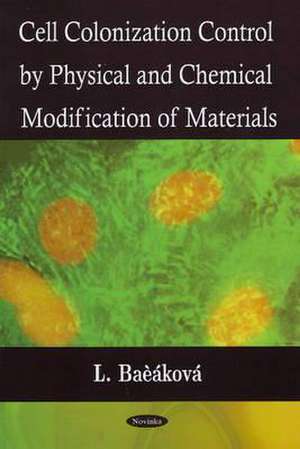Cell Colonization Control by Physical and Chemical Modification of Materials
Autor L. Baeakovaen Limba Engleză Paperback – 17 mar 2009
Preț: 297.90 lei
Preț vechi: 406.65 lei
-27% Nou
Puncte Express: 447
Preț estimativ în valută:
57.00€ • 62.11$ • 48.03£
57.00€ • 62.11$ • 48.03£
Carte indisponibilă temporar
Doresc să fiu notificat când acest titlu va fi disponibil:
Se trimite...
Preluare comenzi: 021 569.72.76
Specificații
ISBN-13: 9781604568875
ISBN-10: 1604568879
Pagini: 88
Ilustrații: colour photos, tables & charts
Dimensiuni: 153 x 227 x 7 mm
Greutate: 0.17 kg
Editura: Nova Science Publishers Inc
ISBN-10: 1604568879
Pagini: 88
Ilustrații: colour photos, tables & charts
Dimensiuni: 153 x 227 x 7 mm
Greutate: 0.17 kg
Editura: Nova Science Publishers Inc
Cuprins
Preface; Introduction; Interaction of Plasma Discharge and Energetic Ions with Materials Surface; Physical and Chemical Characterisation of the Modified Material Surface; Evaluation of Cell-Material Interaction {XE "Interaction"}; Reactions between Plasmas and Polymer Surface; Modification of Polymers by Ion Implantation; Photochemical Modification of Polymers by UV Light-Irradiation; Cell Colonization on Materials Modified by Plasma Discharge, Ion Implantation or UV Light Irradiation; Patterned Surfaces and Grafting Bioactive Molecules; Modification of Materials by Deposition of Organic or Inorganic Layers; Conclusion; Index.
